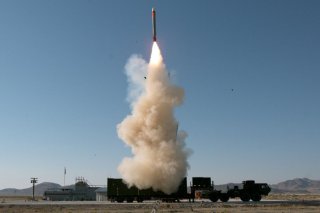Why China Fears the Typhon Missile System
The U.S. has deployed its Typhon missile system to the Philippines in a move aimed at deterring Chinese aggression in the Indo-Pacific. This deployment, reminiscent of Cold War tensions, has sparked concerns of a regional arms race.
Summary and Key Points: The U.S. has deployed its Typhon missile system to the Philippines in a move aimed at deterring Chinese aggression in the Indo-Pacific. This deployment, reminiscent of Cold War tensions, has sparked concerns of a regional arms race.
-The Typhon system, capable of launching both SM-6 and Tomahawk missiles, provides increased flexibility and mobility for U.S.-Filipino defense strategies. While China criticizes the deployment as destabilizing, Philippine Defense Secretary Gilbert Teodoro dismissed these claims, emphasizing his country's right to enhance its defensive capabilities.
-The indefinite deployment of Typhon signals a significant shift in the balance of power in the South China Sea.
U.S. Deploys Typhon Missile System to Philippines Amid China Tensions
The U.S. has deployed its Typhon missile system to the Philippines in an aggressive move to counter China in the Indo-Pacific region. The decision harkens back the deployment of ICBMs to Turkey, which in turn inspired the Soviet Union to establish missile bases in Cuba, which led to the “quarantine” of the island and the Cuban Missile Crisis – generally considered the closest humankind has ever come to nuclear annihilation.
“Multiple media sources reported that the US will retain its mid-range Typhon missile system in the northern Philippines indefinitely, despite Chinese concerns and the risks of retaliatory escalation,” Asia Times reported.
The Typhon’s deployment is a U.S.-Filipino effort to deter China as Xi Jinping’s regime continues to assert itself in the region, and as tensions rise amid various territorial disputes. China, naturally, has expressed disproval over the Typhon deployment, arguing that the missile’s presence could destabilize the region and prompt an arms race.
Philippine Defense Secretary Gilbert Teodoro dismissed China’s concerns, stating that China was meddling with Filipino affairs and using “reverse psychology” to prevent the Philippines from enhancing their defensive capabilities.
Teodoro “further criticized China for its military buildup in the South China Sea, where it has fortified islands with anti-ship and anti-aircraft missiles, and called on Beijing to ‘destroy their nuclear arsenal, remove all their ballistic missile capabilities, get out of the West Philippines Sea and get out of Mischief Reef,’” Asia Times reported.
How long will the Typhon remain in the Philippines?
If the Filipinos have their way, the Typhon missile system will remain stationed in the Philippines permanently. The American presence seems to be reassuring to the modestly equipped Filipino military. The Americans meanwhile are eager to deputize regional partners to help contribute to a Chinese containment and deterrence strategy. The Typhon is especially valuable in that it “allows for force dispersion to boost unpredictability to potential adversaries while enhancing survivability and lethality.” Said another way, the Typhon is mobile – it is launched from the back of a truck – and thus harder to track, destroy, or defend against.
The Typhon, also known as the Mid-Range Capability, can fire either the Standard SM-6 or a Tomahawk missile. The SM-6 is an extended-range anti-air warfare missile that can be used against aircraft of all types, or against ships. The SM-6 can also be used to intercept other missiles. In January, the SM-6 was used to shoot down a Houthi-fire anti-ship ballistic missile. The intercept marked the first time the U.S. Department of Defense had acknowledged an SM-6 missile intercept. The better-known Tomahawk, meanwhile, is a medium- to long-range low-altitude missile with diverse capabilities and pinpoint precision.

Both missiles will now potentially be stationed on the Philippine islands, pointed at an anxious China. Will the gambit pay off?
“US strategic ambiguity around the Typhon deployment may simultaneously enable and restrain the Philippines,” Asia Times reported. “On the one hand, the indefinite deployment of the missiles may deter China from further escalation without fully committing the US to the Philippines’ defense…On the other hand, the lack of US explicit permanent deployment guarantees of the missile system may restrain the Philippines from unilaterally asserting its South China Sea territorial claims.”
About the Author: Harrison Kass
Harrison Kass is a defense and national security writer with over 1,000 total pieces on issues involving global affairs. An attorney, pilot, guitarist, and minor pro hockey player, Harrison joined the US Air Force as a Pilot Trainee but was medically discharged. Harrison holds a BA from Lake Forest College, a JD from the University of Oregon, and an MA from New York University. Harrison listens to Dokken.
Image Credit: Creative Commons.


